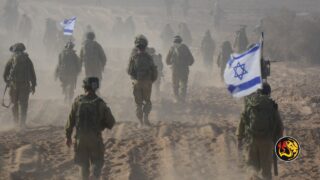IDF Chief of Staff Approves Framework for Gaza City Offensive as Tensions Rise

(Worthy News) – The Israel Defense Forces (IDF) confirmed Wednesday that Chief of Staff Lt. Gen. Eyal Zamir has formally approved the central framework for a major military operation aimed at capturing Gaza City, marking a significant escalation in the nearly two-year-long conflict with Hamas.
Strategic Approval Amid Cabinet Mandate
The move follows last week’s decision by Israel’s Security Cabinet to authorize the seizure of Gaza City, the largest urban center in the Strip and now home to an estimated one million displaced Palestinians. While the government has not announced a precise timetable for the assault, the plan signals that the IDF is moving toward its most ambitious ground offensive since the war began.
According to the IDF, Zamir convened a high-level strategy session on Wednesday with the General Staff Forum, Shin Bet representatives, and senior commanders. The meeting reviewed recent operations, including a new push in the Zeitoun neighborhood that began Tuesday. Military leaders then presented the “main concept” for the Gaza City campaign, which was subsequently approved.
The plan reportedly integrates coordinated ground, air, and intelligence operations with an emphasis on dismantling Hamas’ command structure while attempting to limit IDF casualties. Reserve units are being prepared for rapid mobilization, with training refreshers and logistical staging already underway.
Internal Disputes and Political Pressures
The decision comes amid reported friction between Zamir and Defense Minister Israel Katz, as well as earlier disagreements with Prime Minister Benjamin Netanyahu. Zamir had previously expressed concerns that a full-scale assault could endanger remaining hostages, 20 of whom are believed to be alive in Gaza.
Despite these tensions, the cabinet decision–shaped through consultations between Netanyahu, Shas party leader Aryeh Deri, and Zamir–reflects a compromise balancing military pressure with concerns about troop fatigue, the intense summer heat, and humanitarian fallout.
Humanitarian Efforts Continue Under Fire
As fighting intensifies, aid deliveries struggle to meet demand. Israel’s Coordinator of Government Activities in the Territories (COGAT) said 320 aid trucks entered Gaza on Tuesday via Kerem Shalom and Zikim crossings, alongside three UN fuel tankers. Additionally, multinational airdrops from Jordan, the UAE, Germany, Belgium, France, and Italy delivered 119 pallets of food.
The United Nations warns that at least 600 truckloads are needed daily to address Gaza’s humanitarian crisis, a number far exceeding current delivery levels. Airdrops, while symbolically important, provide only a fraction of the required supplies and carry risks for civilians on the ground.
Wider Regional Conflict
In remarks during a visit to southern Lebanon on Wednesday, Zamir said the IDF is “operating in Gaza, Lebanon, Syria, Yemen, and monitoring Iran,” describing the situation as a “multifront war.” His comments underscore Israel’s expanding operational scope even as preparations for Gaza City intensify.
The war, sparked by Hamas’ October 7, 2023, cross-border assault that killed around 1,200 Israelis and saw 251 hostages taken, has since claimed tens of thousands of lives in Gaza, according to Hamas sources. Israel says it has killed roughly 20,000 combatants while seeking to minimize civilian casualties in an environment where Hamas embeds itself in residential areas, schools, hospitals, and mosques.
With the framework now approved, Gaza City appears set to become the next–and potentially most decisive–battlefield in Israel’s ongoing campaign against Hamas.
Reporting contributed by Worthy News staff and wire services.
💡 Did you know? One of the best ways you can support Worthy News is by simply leaving a comment and sharing this article.
📢 Social media algorithms push content further when there’s more engagement — so every 👍 like, 💬 comment, and 🔄 share helps more people discover the truth. 🙌
Latest Worthy News
If you are interested in articles produced by Worthy News, please check out our FREE sydication service available to churches or online Christian ministries. To find out more, visit Worthy Plugins.
